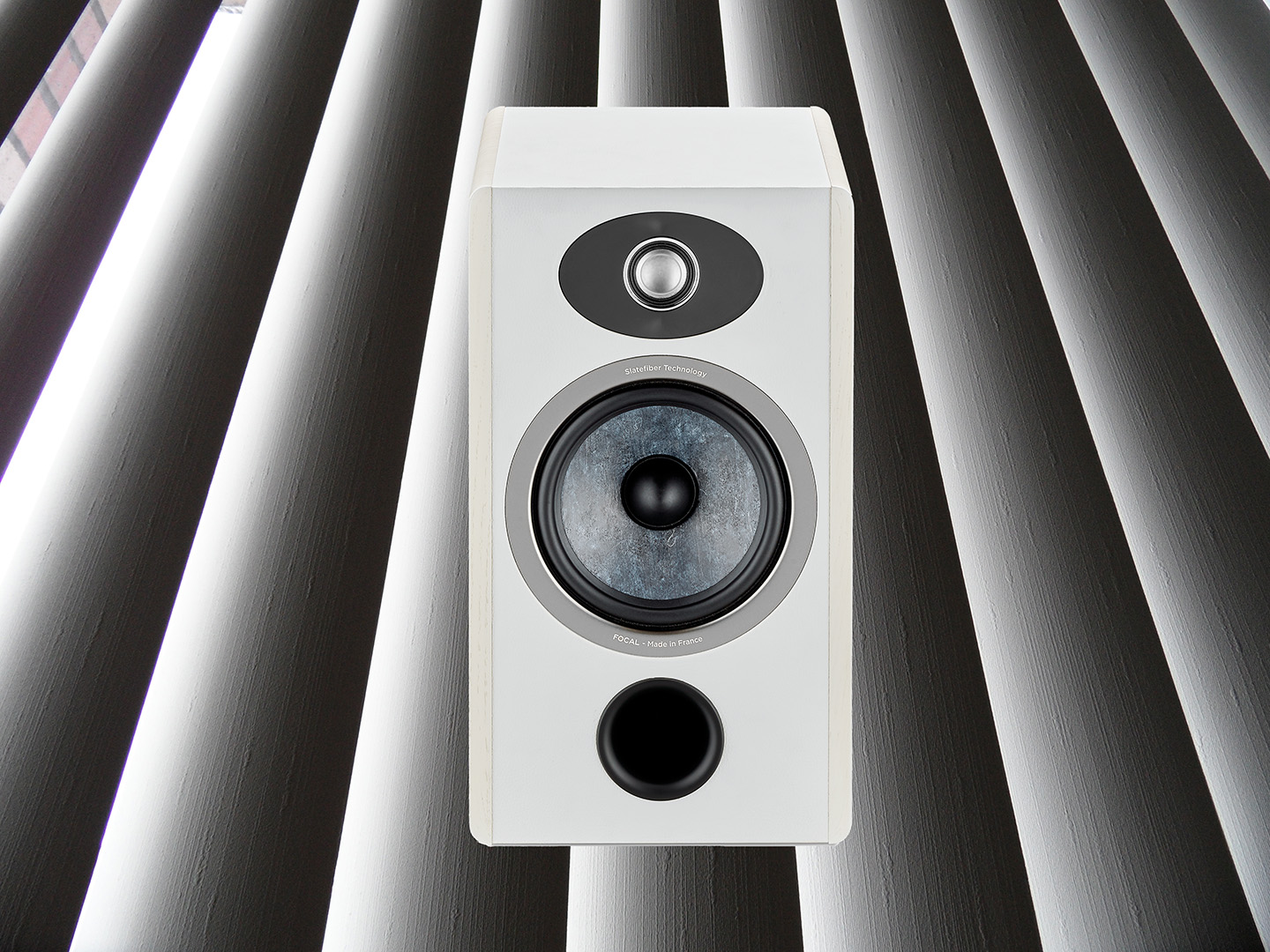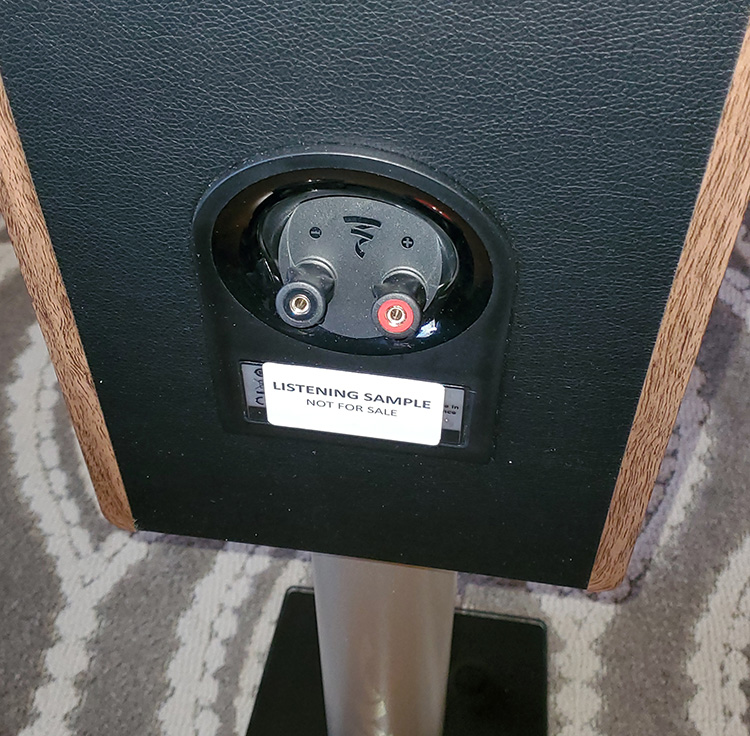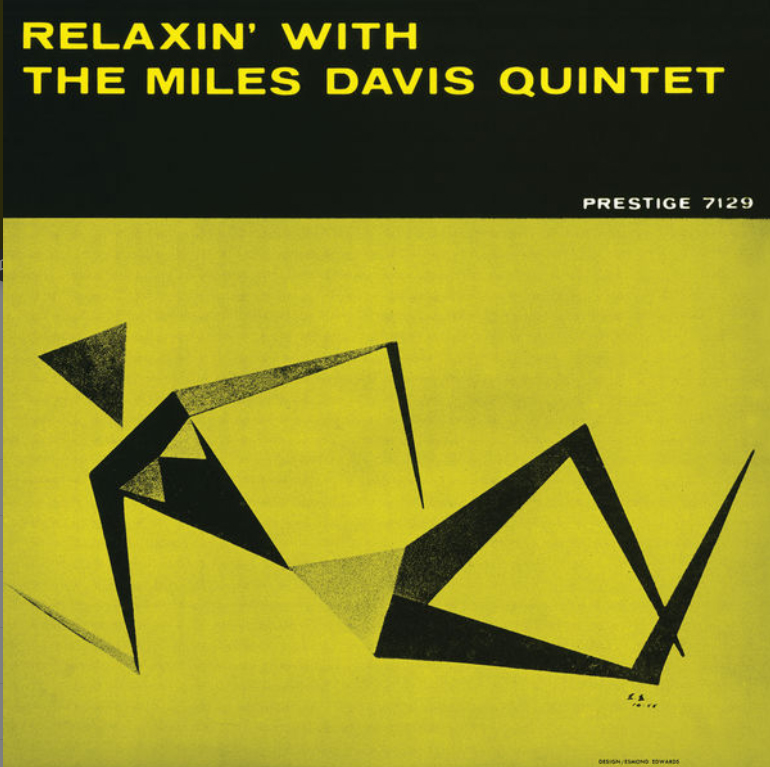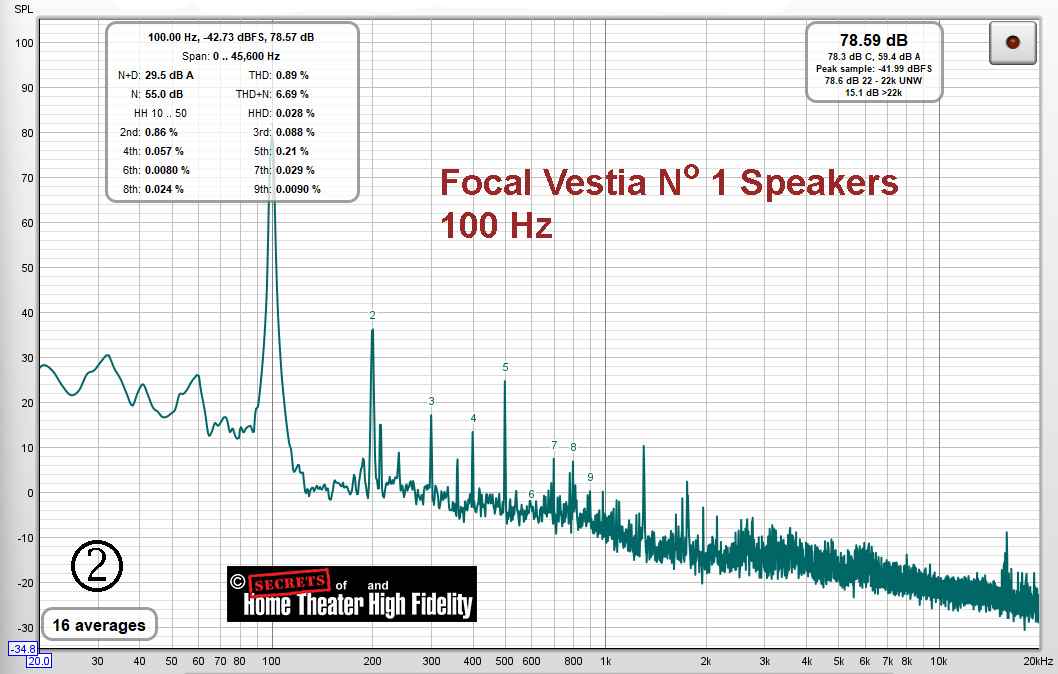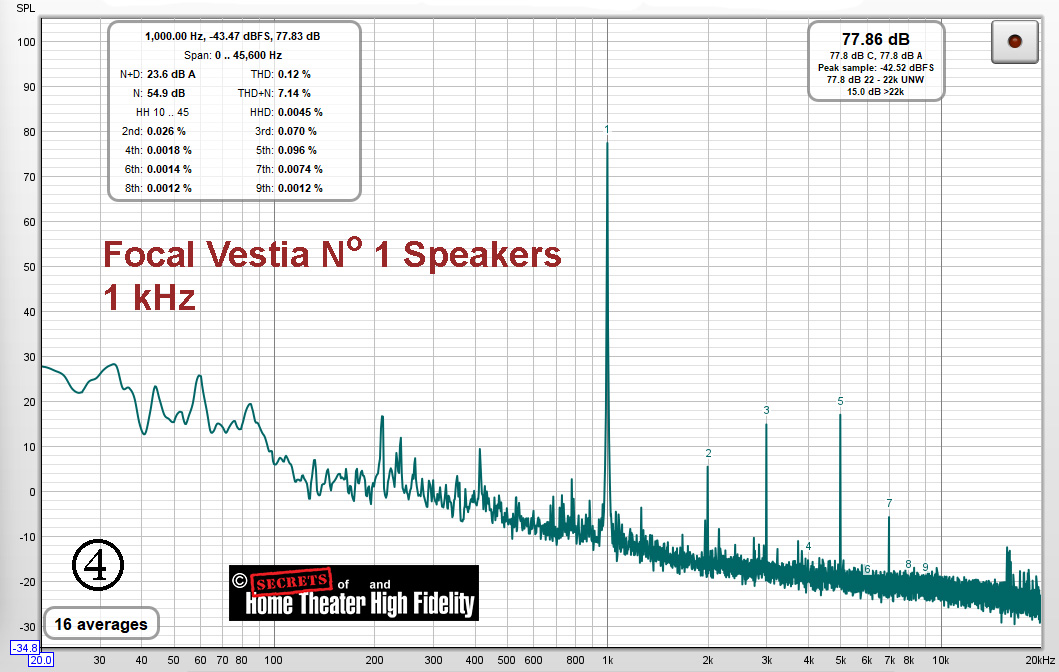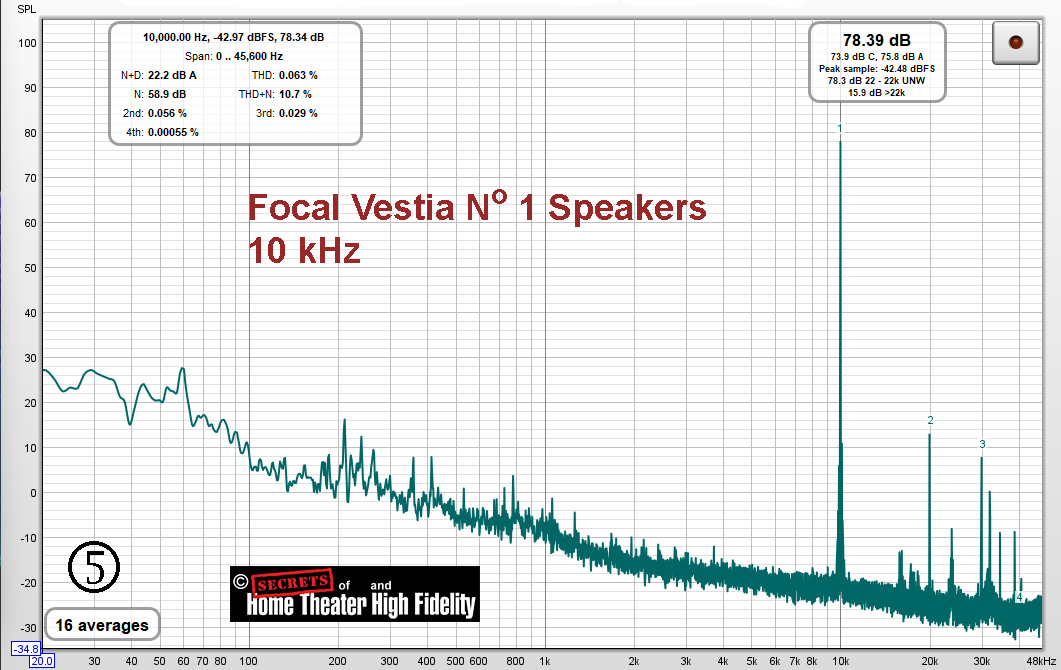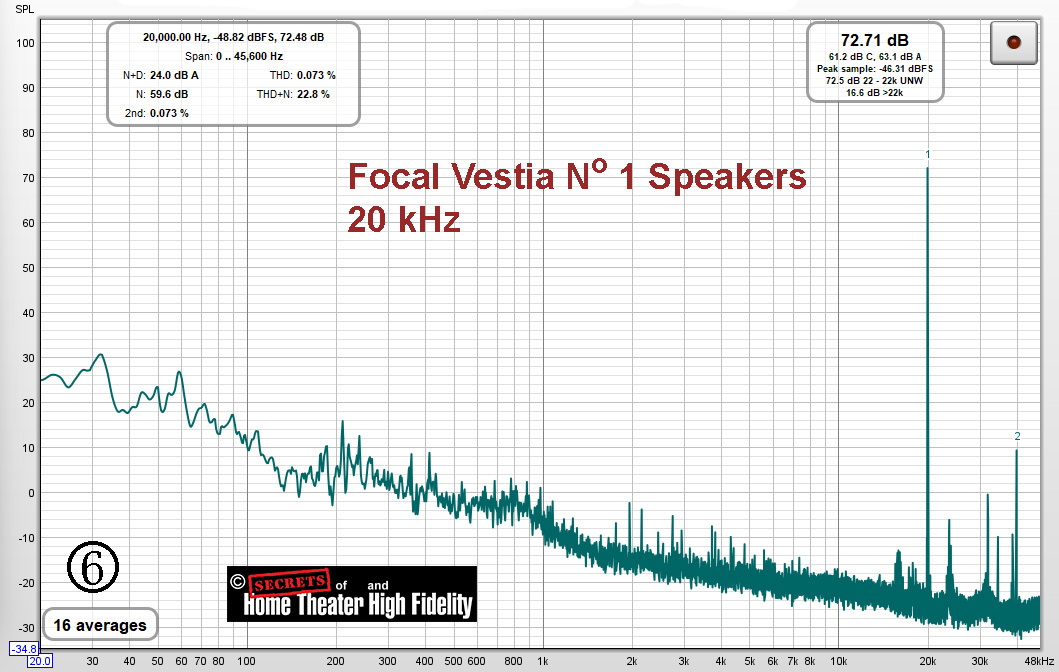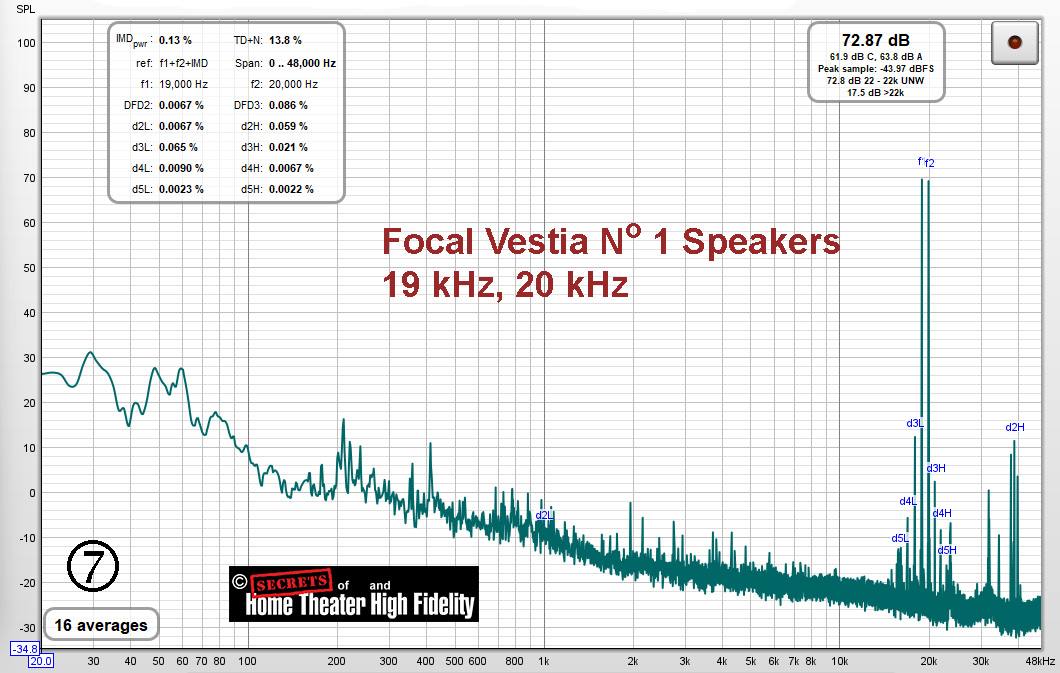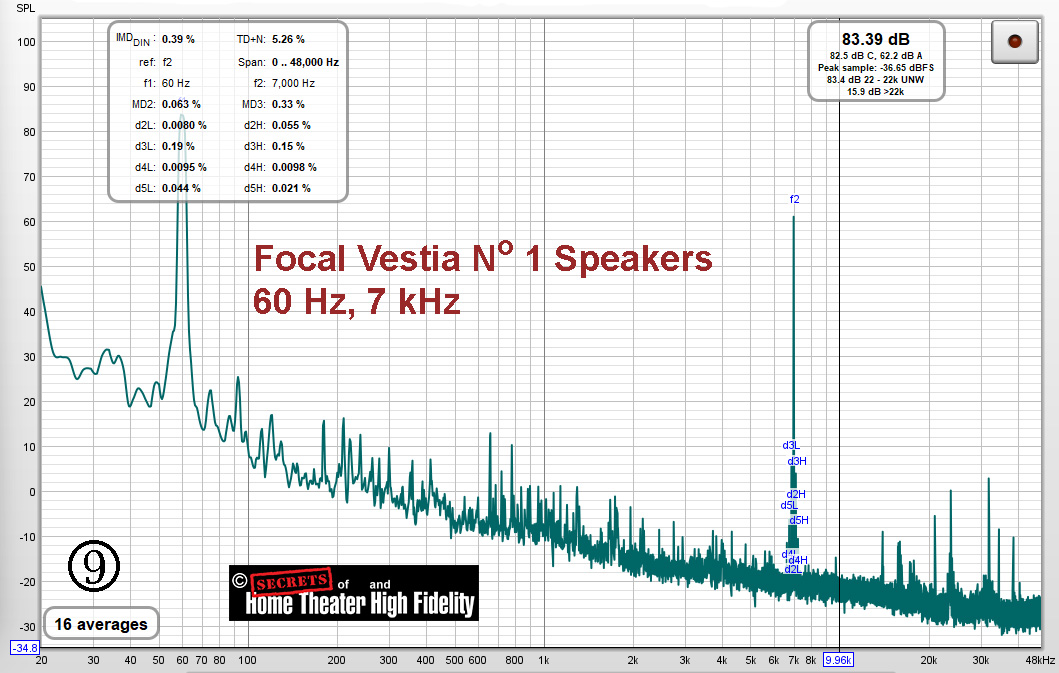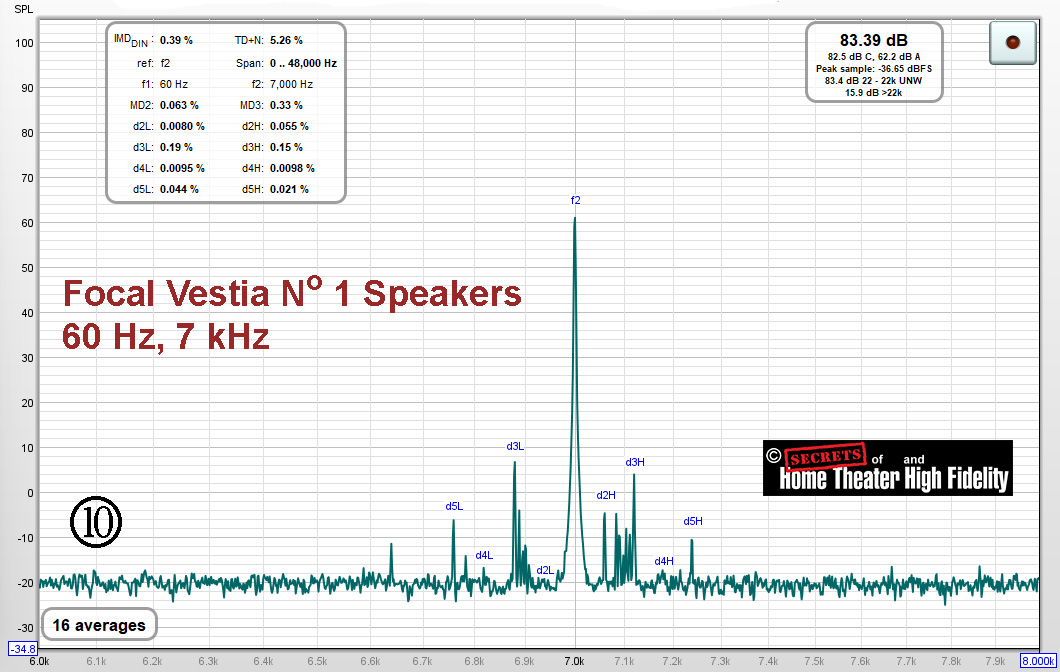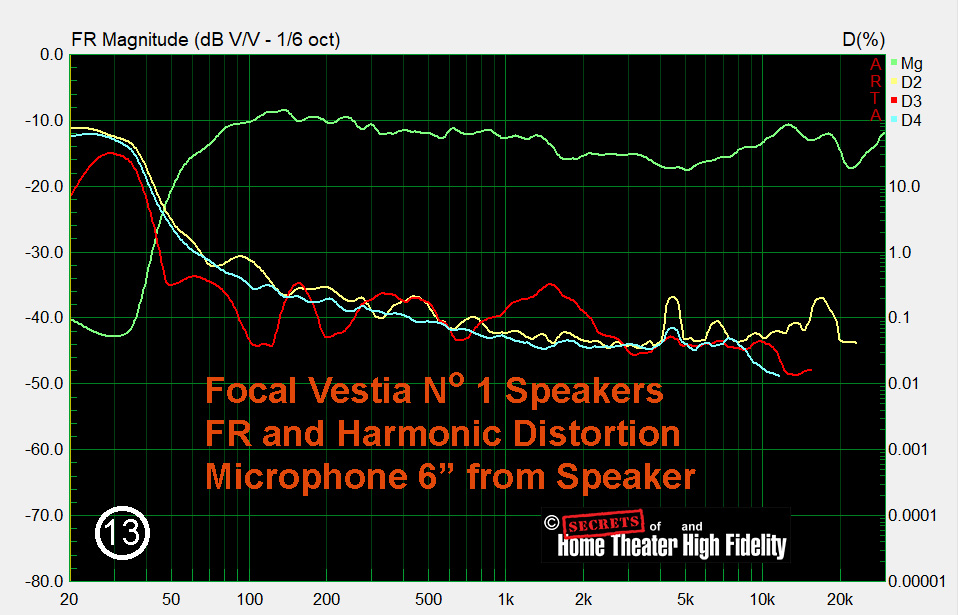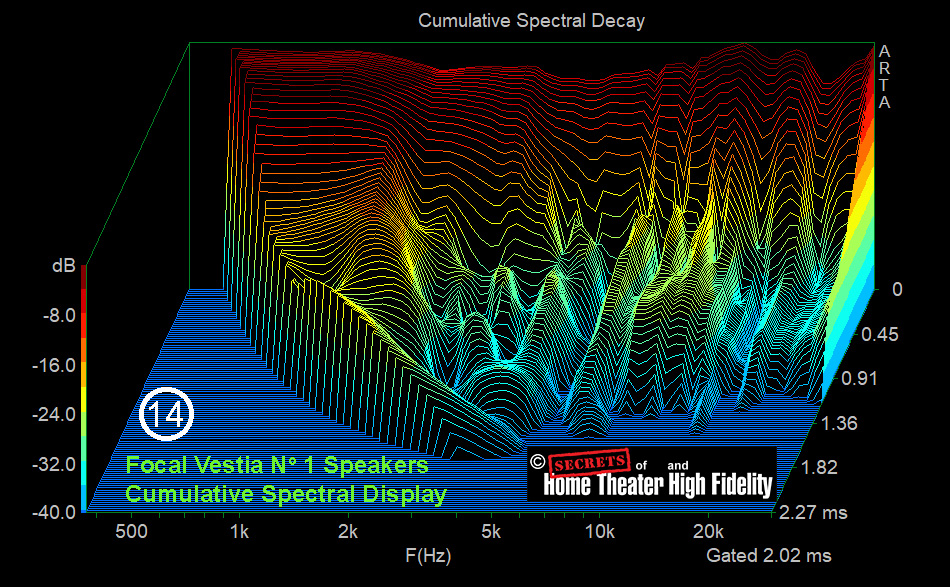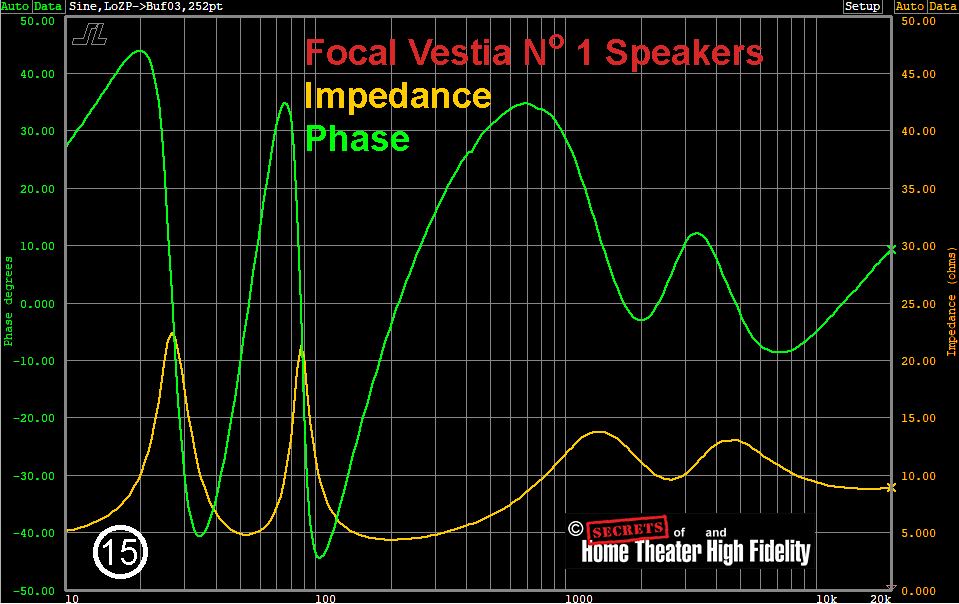Focal Vestia No 1 Bookshelf Speakers Highlights
- Low Distortion
- Front-ported so it can be mounted on a wall
- Faux leather cover on enclosure puts most of the expense into the drivers
- Unusual frequency response focuses on the midrange and bass, to keep treble harshness down in higher volume music and movie soundtracks
A few months ago, I started a video series, “Stereo Audio & Home Theater 101+” where I described components that consumers and new aficionados to the audio and video world might find useful in setting up a home theater. In “Video 3, The Speakers” I reviewed three models of bookshelf speakers which I recommended.
Subsequently, I found other models which I felt would be good choices and published Part II of the video series dealing with speakers.
So, now we continue on with Part III, which will have two bookshelf speaker models in the video. This is the second one – Focal Vestia No 1 – reviewed here and scheduled for the video.
Design:
Two-way bookshelf, ported on front
Drivers:
One 1” aluminum/magnesium inverted dome TAM tweeter
One 6.5” slate-fiber mid-bass (woofer)
Crossover Frequency:
2.8 kHz
Binding Posts:
Large
Frequency Response:
56 Hz – 30 kHz, ± 3 dB
Nomnial Impedance:
8 Ohms
Sensitivity:
89.5 dB @ 1 Watt, 1 Meter
Finish:
Black faux leather, Walnut imitation wood covering on sides
Dimensions:
8-5/8” W x 10-1/4” D x 15-1/4″ H
21.9cm W x 26cm D x 38.7cm H
Weight:
15.4 pounds/each (7 kg)
MSRP:
$1,198/pair USD
Website:
Company:
SECRETS Tags:
Bookshelf, focal, no 1, speakers, stand-mount, vestia
The Focal Vestia No 1’s are a two-way design with tweeter and mid-bass woofer. The port is on the front.
The review units have faux leather on the top, front, rear, and bottom. Imitation walnut veneer covers the sides.
The tweeter is a 1” inverted aluminum/magnesium alloy dome, called a TAM. Inverting the tweeter dome allows for the suspension at the edges, but a smaller voice coil at the center in the rear instead of a large voice coil attached at the edges of a conventional tweeter. A smaller voice coil results in lower mass which lowers distortion. The mid-bass woofer is 6-1/2” and the cone is made from what Focal calls “Slatefiber.” Slatefiber involves the use of recycled, non-woven carbon fibers applied as a sandwich between two layers of thermoplastic polymer. Focal states that this material makes for a light, rigid, and well damped cone.
They are also available in white. And gloss black.
The binding posts are large. The outer portions of the posts are plastic and have ridges to make them easy to tighten. They are not gold-plated.
Some speakers are set up for bi-wiring/bi-amping by having two pairs of binding posts with a jumper connecting them. The Vestia No 1’s have a single pair of binding posts.
They offer a set of speaker stands specifically designed for the Vestias, priced at $299/pair. They are tilted upward to give a specific dispersion to the listener.
I listened to the Focal Vestia Vestia No 1 speakers using an OPPO UDP-205 Universal Player, Pass Labs XP-20 Stereo Preamplifier, Pass Labs X600.8 Monoblock Power Amplifiers, and Emotiva RMC-IL 9.1.6 Surround Sound Processor. Other amplifiers powered the additional channels. I also listened with my VPI-HR-X Turntable with Sumiko Starling and Blackbird MC Cartridges, Pass Labs XP-27 Phono Preamplifier, Balanced Audio Technology VK-5i Pure Class A Triode (Tube) Stereo Preamplifier, and Balanced Audio Technology VK-500 Solid State Stereo Power Amplifier.
I have a Pass Labs XP-20 preamplifier wired in with my OPPO UDP-205 player and Emotiva RMC-1L processor such that it is in series with the front left/right output from the processor to the Pass Labs X600.8 Power Amplifiers, but also direct from the UDP-205 to the XP-20 so that I can bypass the processor when listening to stereo music from the player. The signal also goes to the processor when I am doing this which allows the subwoofers to be active. In this case, I just do not turn on the other power amplifiers.
I like to listen to audio products using some music that would be considered as stress tests. Harmonicas would be in that category. So would electronic music. The Vestia No 1’s did well here, and the reason is that the frequency response slopes downward with increasing frequencies. This is the difference I have described between consumer speakers and studio monitors. Consumer speakers’ frequency responses can be “shaped” to provide a specific sound, while studio monitors are designed with a flat frequency response.
Female voices sounded very natural. I love jazz, and Just Coolin’, by Art Blakey and the Jazz Messengers sounded just cool. Piano has complex sound because so many notes can be played at the same time. The Vestia No 1 speakers did not sound congested with this (Mozart) type of sound.
Miles Davis Quintet “Relaxin’ with the Miles Davis Quintet”
I listened to my copy of Relaxin’ with the Miles Davis Quintet which was re-released a while back on vinyl using a one-step process that involves only analog signal paths. Miles played most of the tracks using his trumpet mute.
Here is a photo of a horn mute. It is inserted into the bell of the trumpet, and the cork on the sides makes it fit tightly. Muted trumpets sound kind of edgy. I don’t care for that type of sound, but it makes for a good test. The Focal Vestia No 1’s reproduced it with a rather smooth sound characteristic because of the downward slope in high frequencies. I liked this effect very much.
I also set up the Vestia No 1’s in my home theater in various channels. As I have mentioned before, I would suggest using a crossover to a subwoofer at 60-70 Hz, so the relatively small mid-bass driver will not have to work so hard. Again, I like the relatively higher midrange with respect to the high frequencies. It reduces harshness,
One Vestia No 1 was placed on a speaker stand, with the calibrated laboratory microphone situated 1 meter away, on-axis pointed at a spot in between the tweeter and the woofer.
I set the volume control to output 1 kHz at 78 dB SPL and then measured other frequencies without changing the volume control.
Figure 1 below shows that, at 60 Hz and 83.65 dB, THD was 0.072%. The 2nd-ordered harmonic was higher than the third, so the mid-bass driver (woofer) was coasting along.
The harmonics are numbered just above the tip of each harmonic. You can click on each graph to see the details of the harmonics listed at the top left of each graph.
In Figure 2, at 100 Hz, distortion was 0.89%, which is relatively high, but the 2nd-ordered harmonic was still larger than the 3rd, and bass tends to be high in distortion.
The 200 Hz test (Figure 3) yielded much lower distortion (0.079%) than at 100 Hz, but this time, the 3rd-ordered harmonic was larger. This all has to do with the tuning of the port.
Moving on to 1 kHz, distortion was a very manageable 0.12% (Figure 4). The 3rd-ordered harmonic is larger than the 2nd.
At 10 kHz (Figure 5), we are looking at the sound coming from the tweeter. In this case, the 2nd-ordered harmonic is larger than the 3rd. For listening to music, I like the high frequencies to be generating distortion primarily at the 2nd-ordered harmonic because that makes the sound less edgy.
And, at 20 kHz (Figure 6), distortion was 0.073%.
I have begun using the 19 kHz, 20 kHz test with speakers, Figure 7 below. It is a standard test for audio electronics such as preamplifiers and power amplifiers. IM was 0.13%. We will see how this test works out in subsequent speaker measurements.
Figure 8 is a closeup of the peaks produced with the 19 kHz, 20 kHz test. There are three small peaks on either side of the signal frequencies. With an amplifier, this would be a good result.
Using 60 Hz and 7 kHz sine waves, Figure 9 below, Intermodulation Distortion (IM) was 0.39%. This is an unusual test for speakers, but I am curious as to how the projected sound interacts between 60 Hz in the woofer with 7 kHz from the tweeter. I am experimenting here. I will do this for more speakers which will, hopefully, show how different tweeters project their sound using different designs interact with the sound projected by the woofer.
Figure 10 below is an expansion of the X axis to show the details of the 60 Hz, 7 kHz IM peaks. For now, I am just cataloging data.
The Frequency Response (lower curve in Figure 11) shows a decline from about 200 Hz onward to the high frequencies. This is what gives the Vestia No 1 speakers their smooth, easy to listen to, sound. The distortion from 2nd, 3rd, and 4th-ordered harmonics is shown in the upper curves. The dips between 100 Hz and 200 Hz are room effects.
The Step Response (Figure 12) shows that the tweeter and woofer are in phase.
In order to show that the dips in the response are room effects, I measured the response with the microphone 6” from the speaker, on-axis with a point between the tweeter and woofer (Figure 13). You can see that the dips are no longer there. You can also see that the bass is strong. The rise above 5 kHz is due to the microphone proximity to the tweeter.
The Cumulative Spectral Display (CSD) in Figure 14 shows that there are some enclosure resonances as well as driver resonances, but they are not excessive.
An Impedance/Phase plot is shown in Figure 15 below. The minimum impedance is 4 Ohms at 200 Hz, and the maximum impedance is 22 Ohms at 27 Hz. The maximum phase angle is + 430 at 20 Hz and the minimum phase angle is -440 at 110 Hz.
Focal’s Vestia No 1 speakers would be a good investment to a home theater or small stereo system for those who prefer a smoother top end in their sound. None of the high frequency test tracks caused me to wince. They are affordable, so several pairs could be used as surrounds or even in a full-on compact HT system with subwoofers.
- Shaped frequency response to create smooth sound
- Low distortion
- Compact with strong bass
- Expense put into the drivers rather than the enclosure finish
- Gold-plated binding posts




